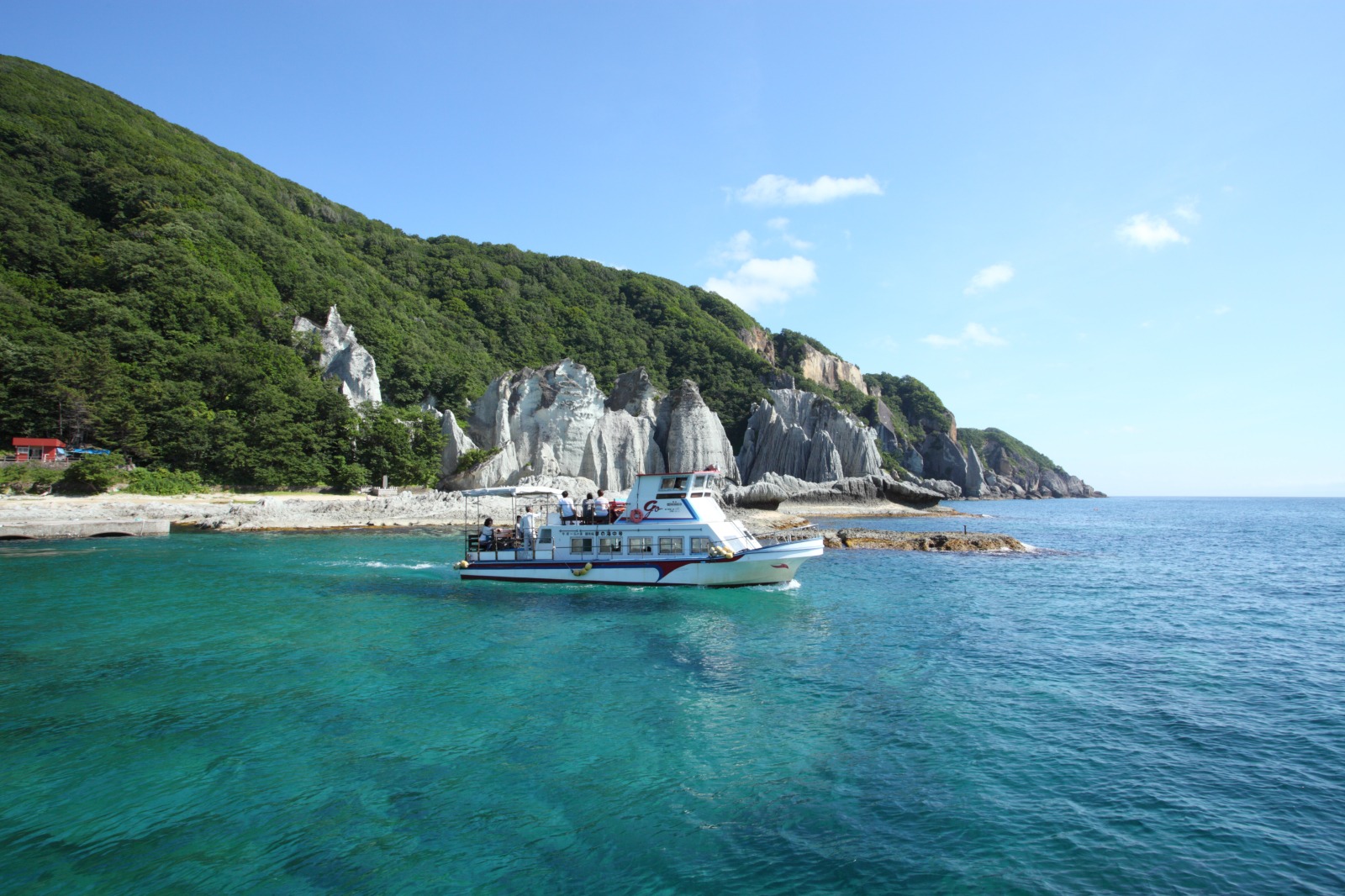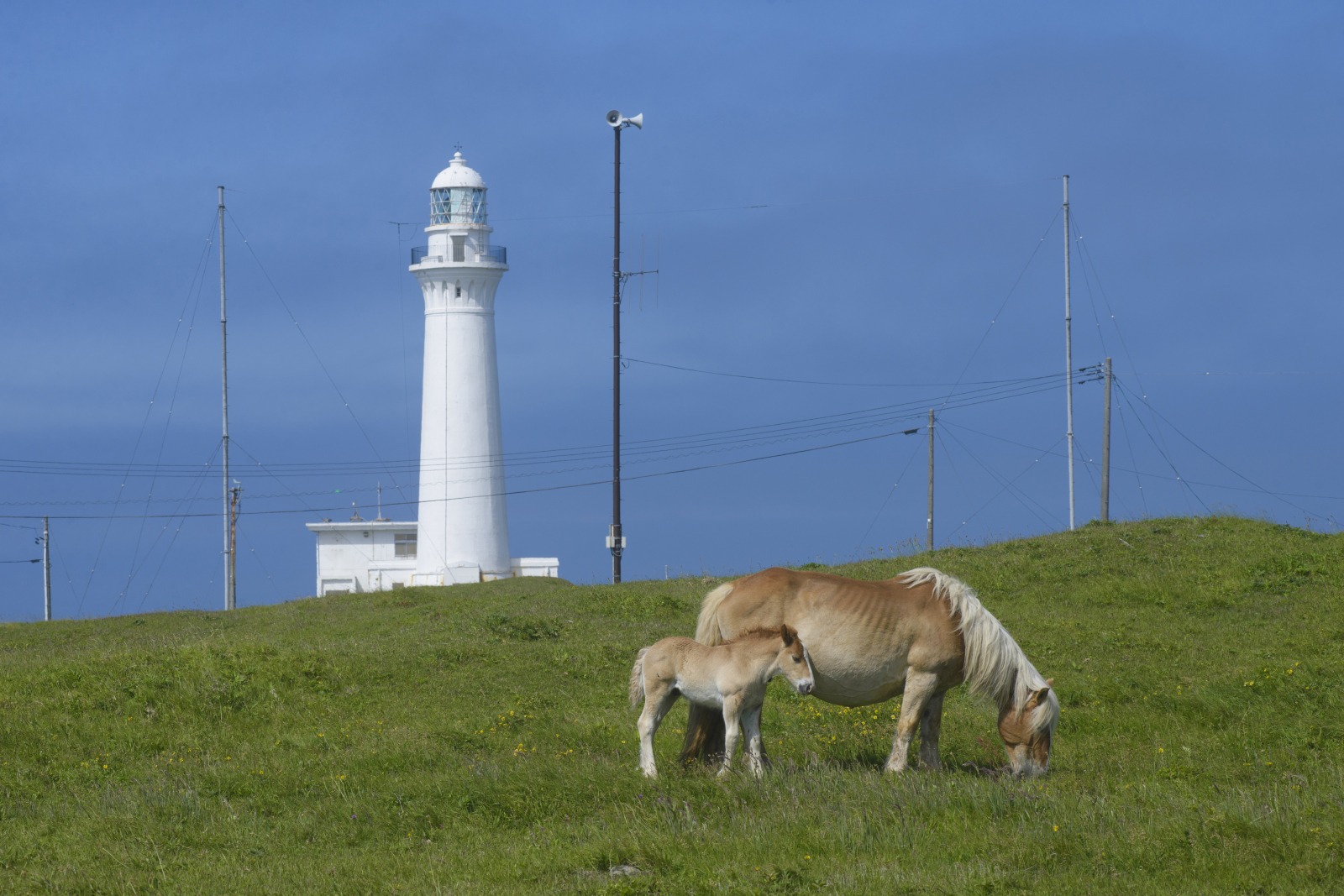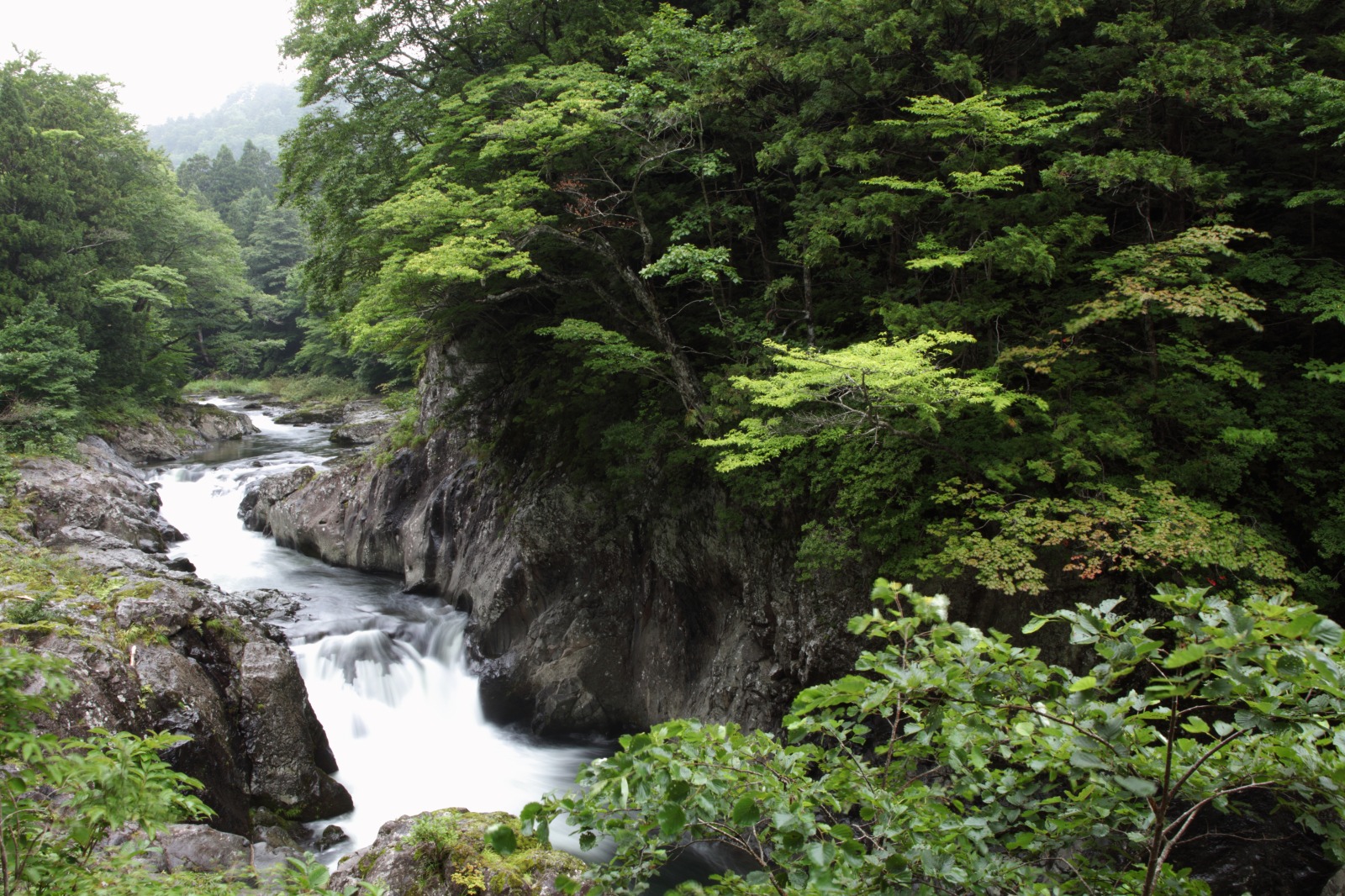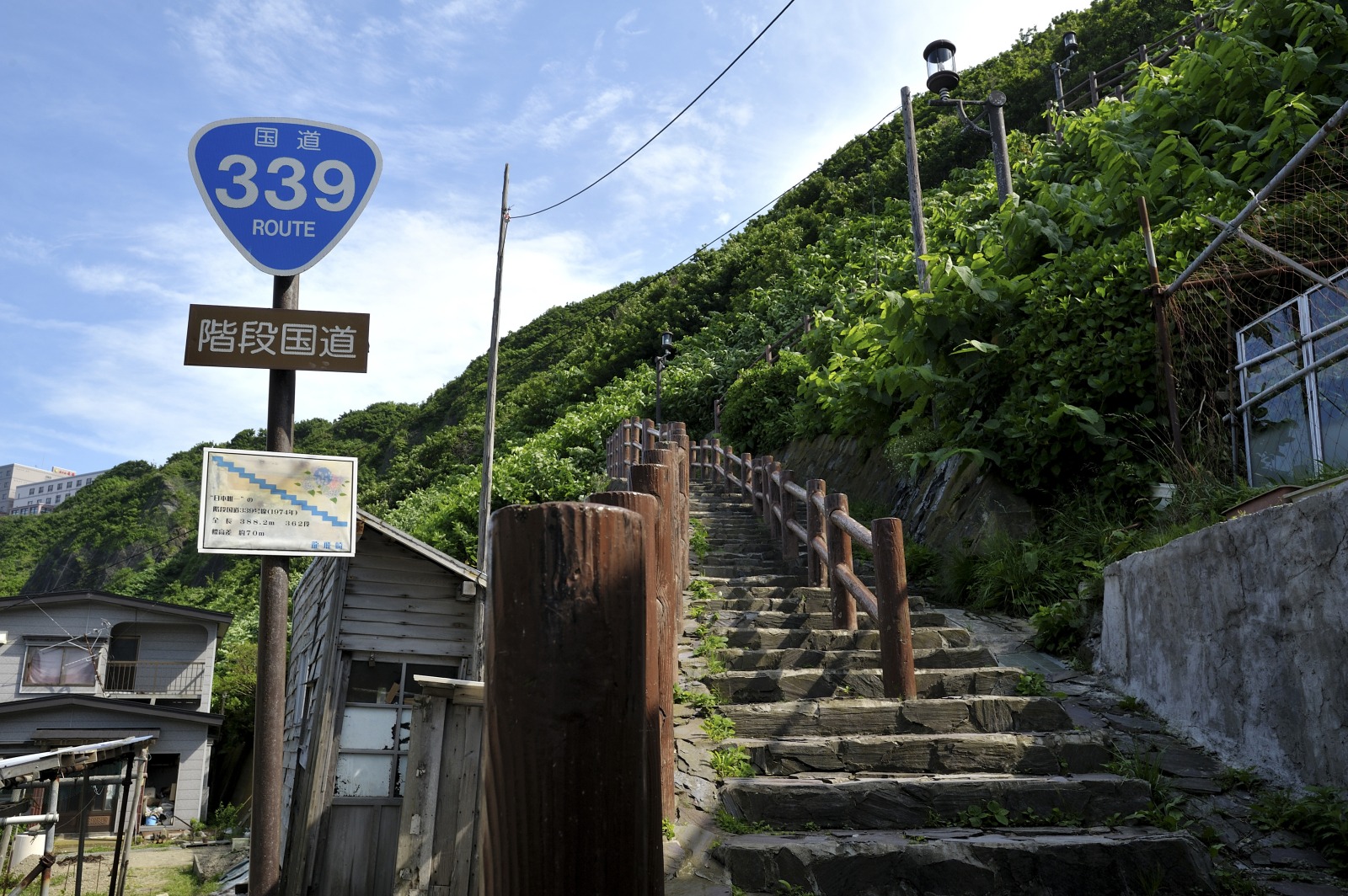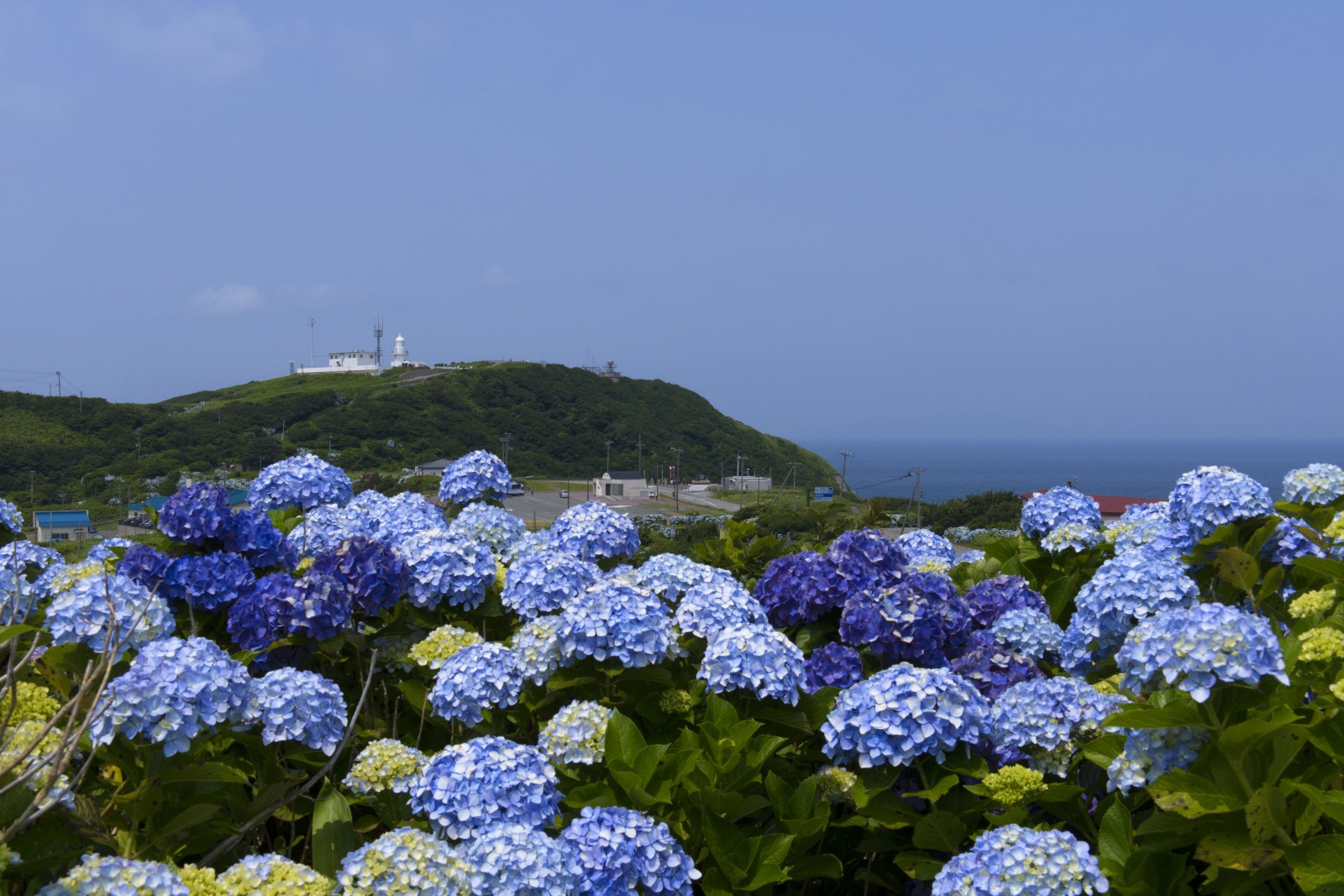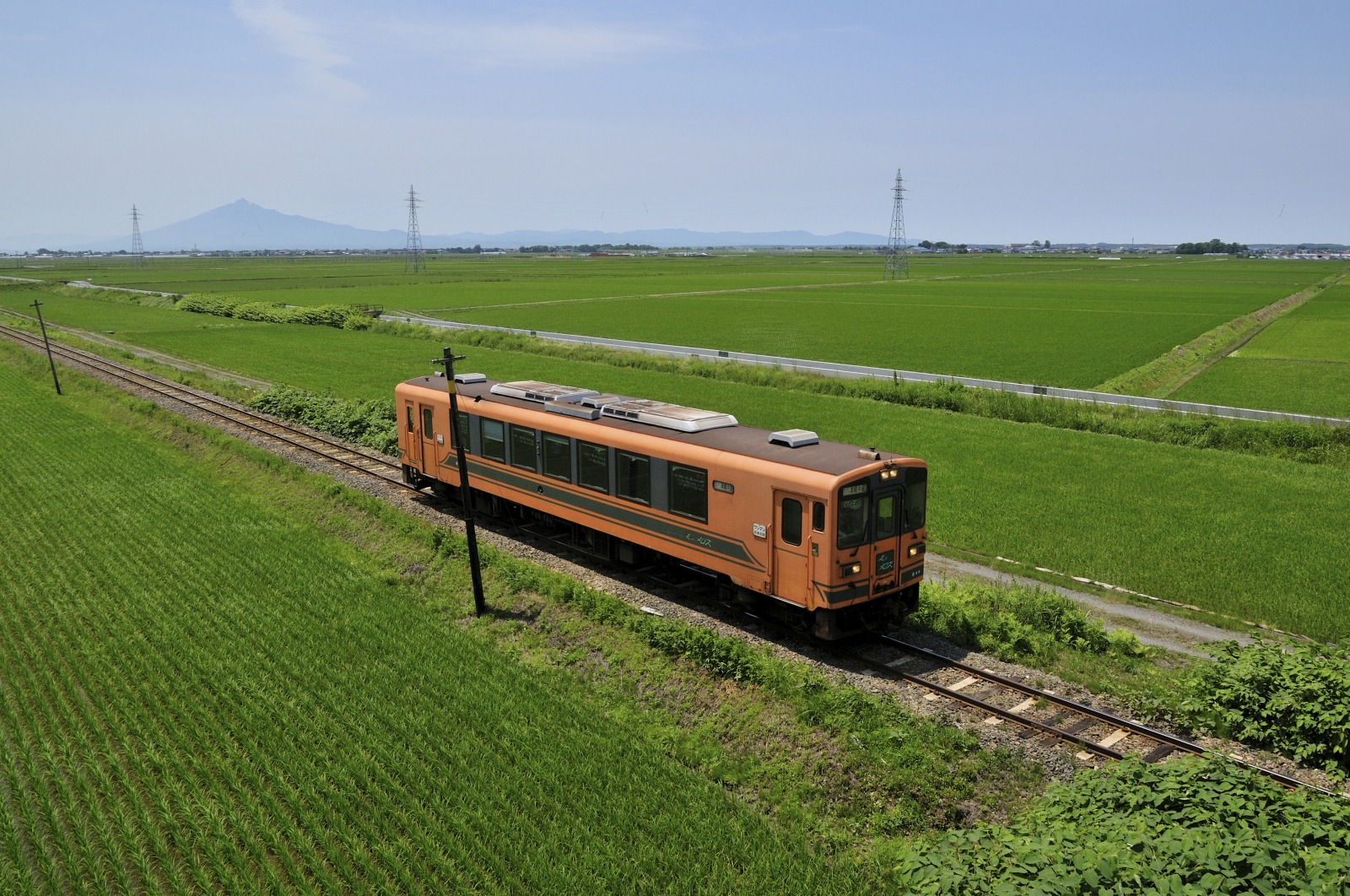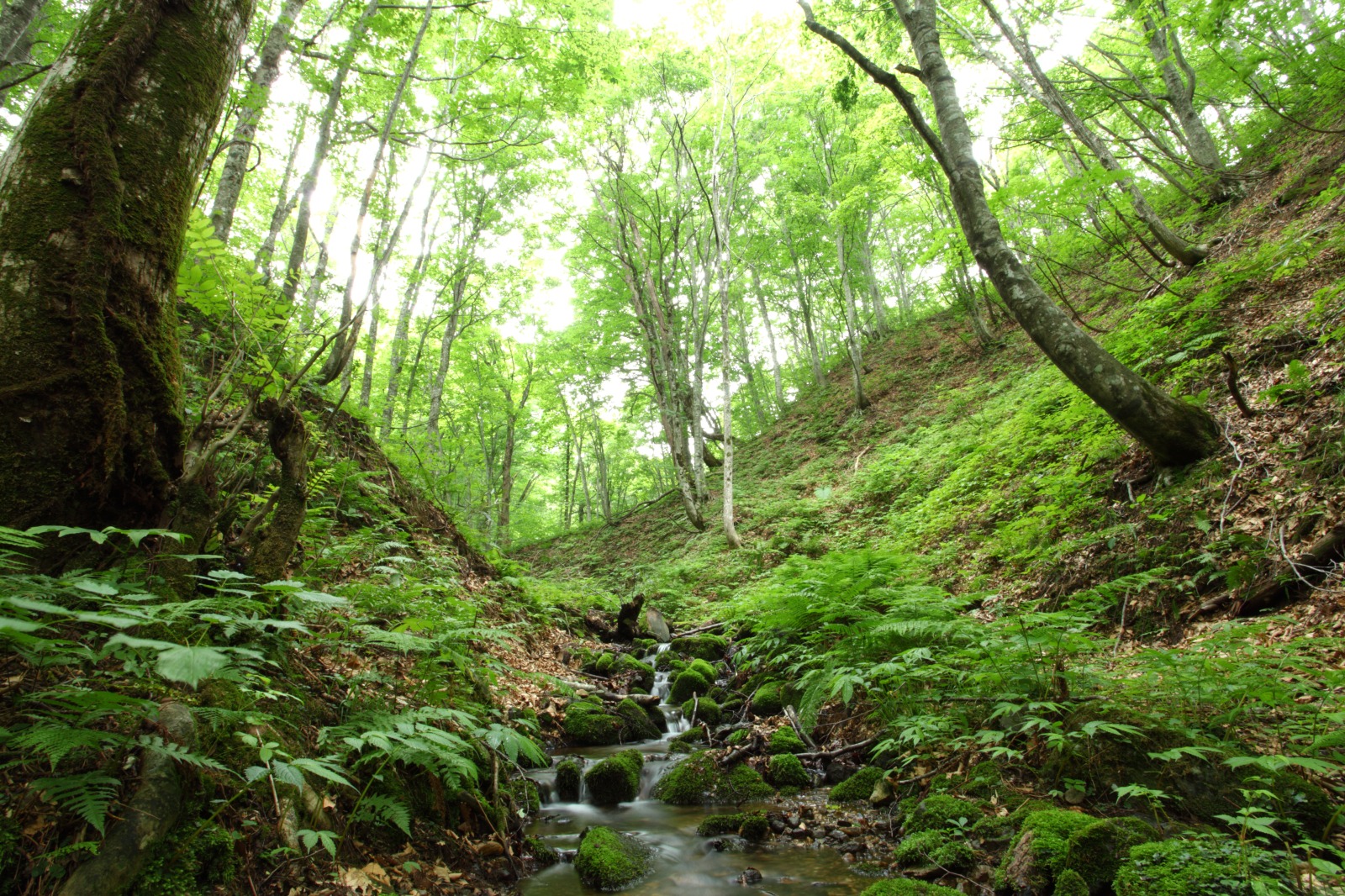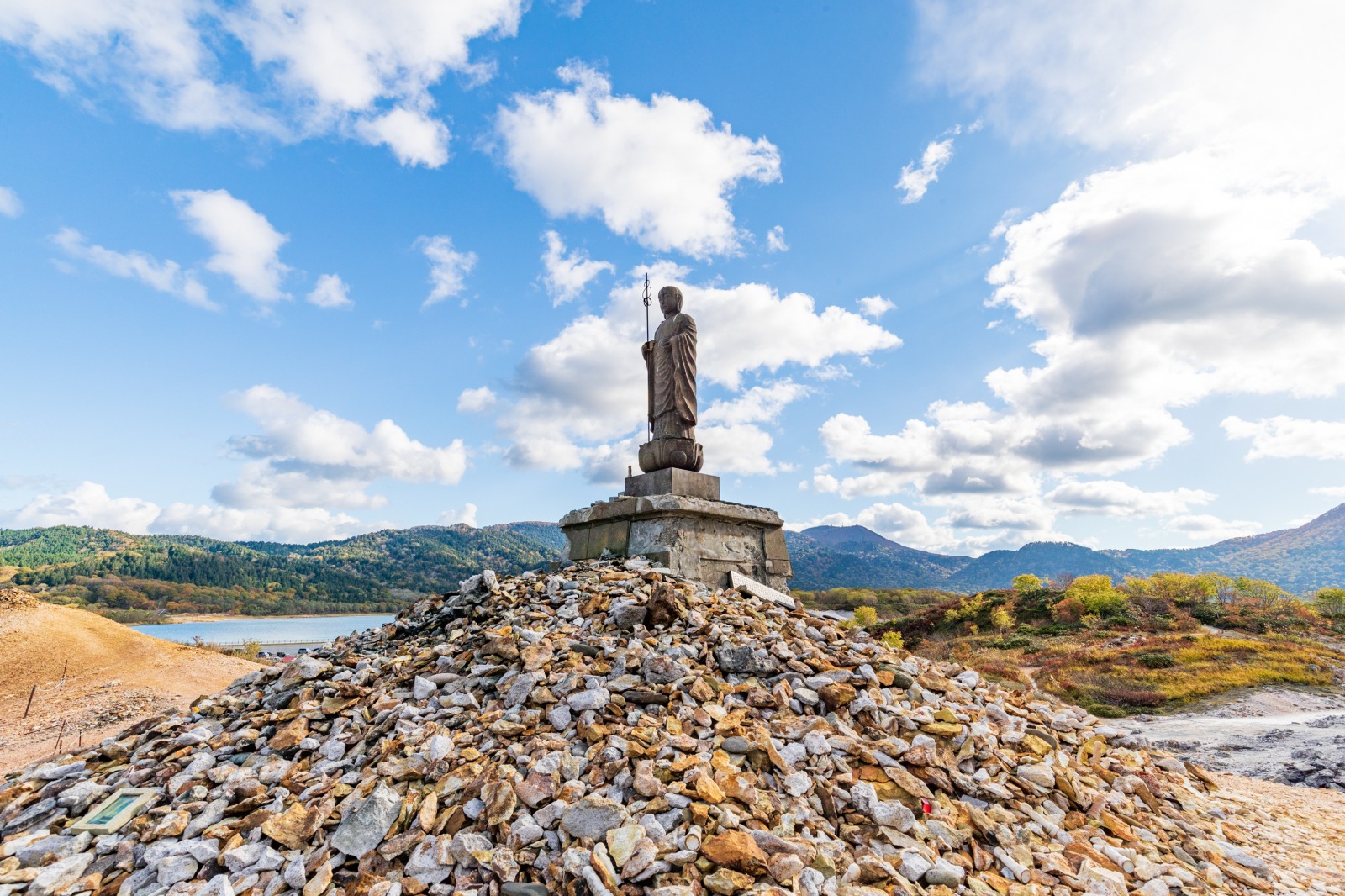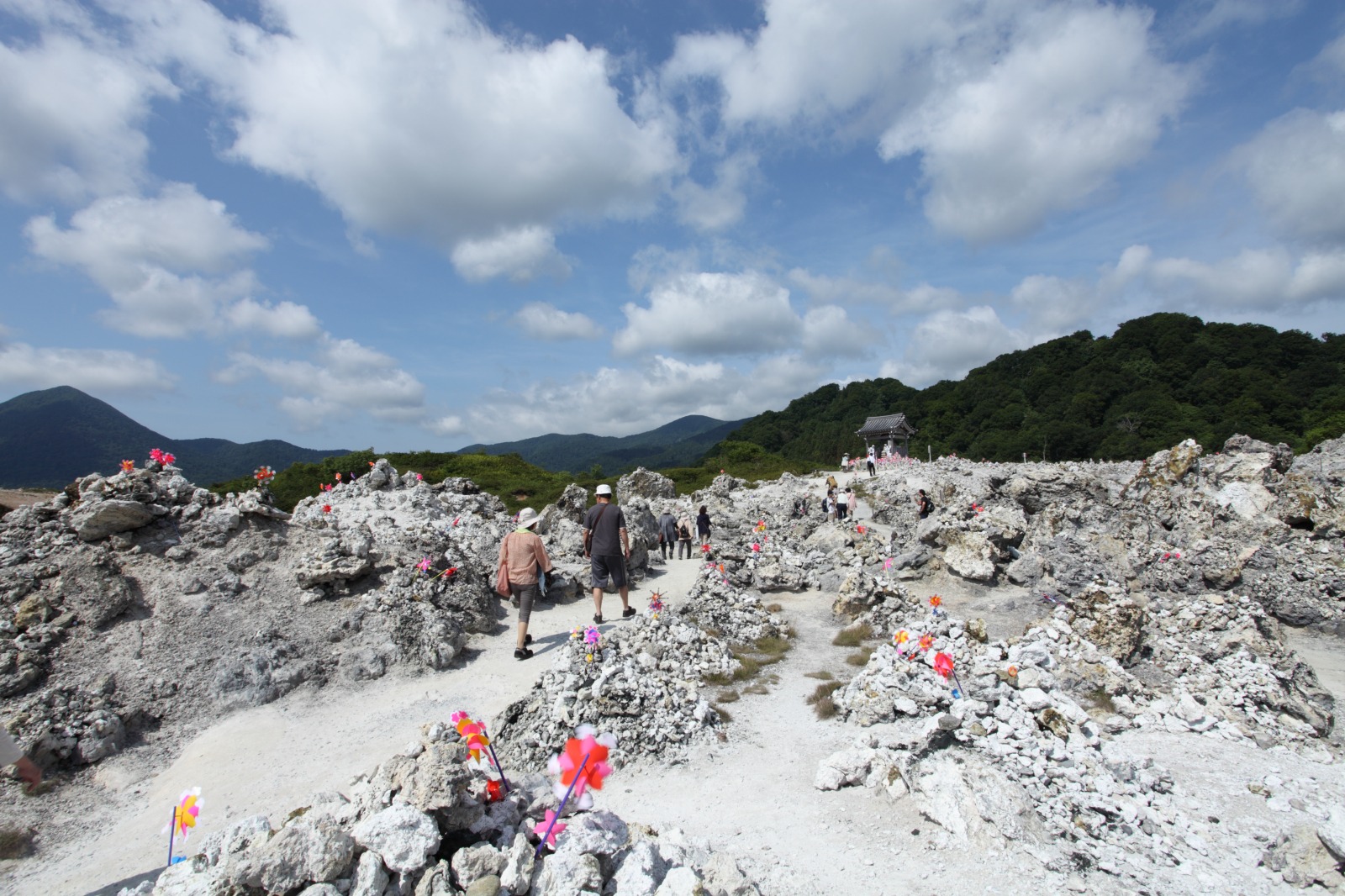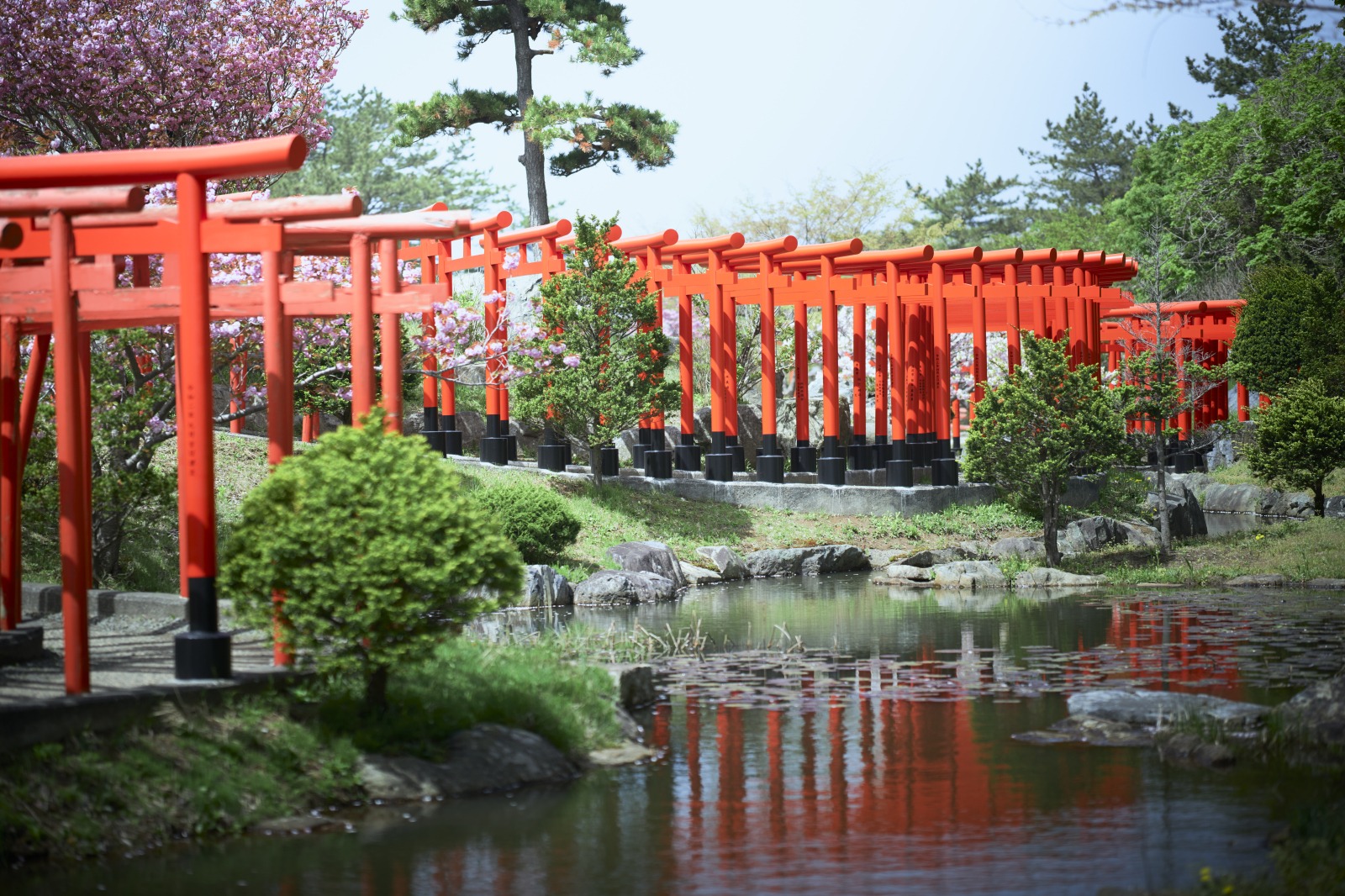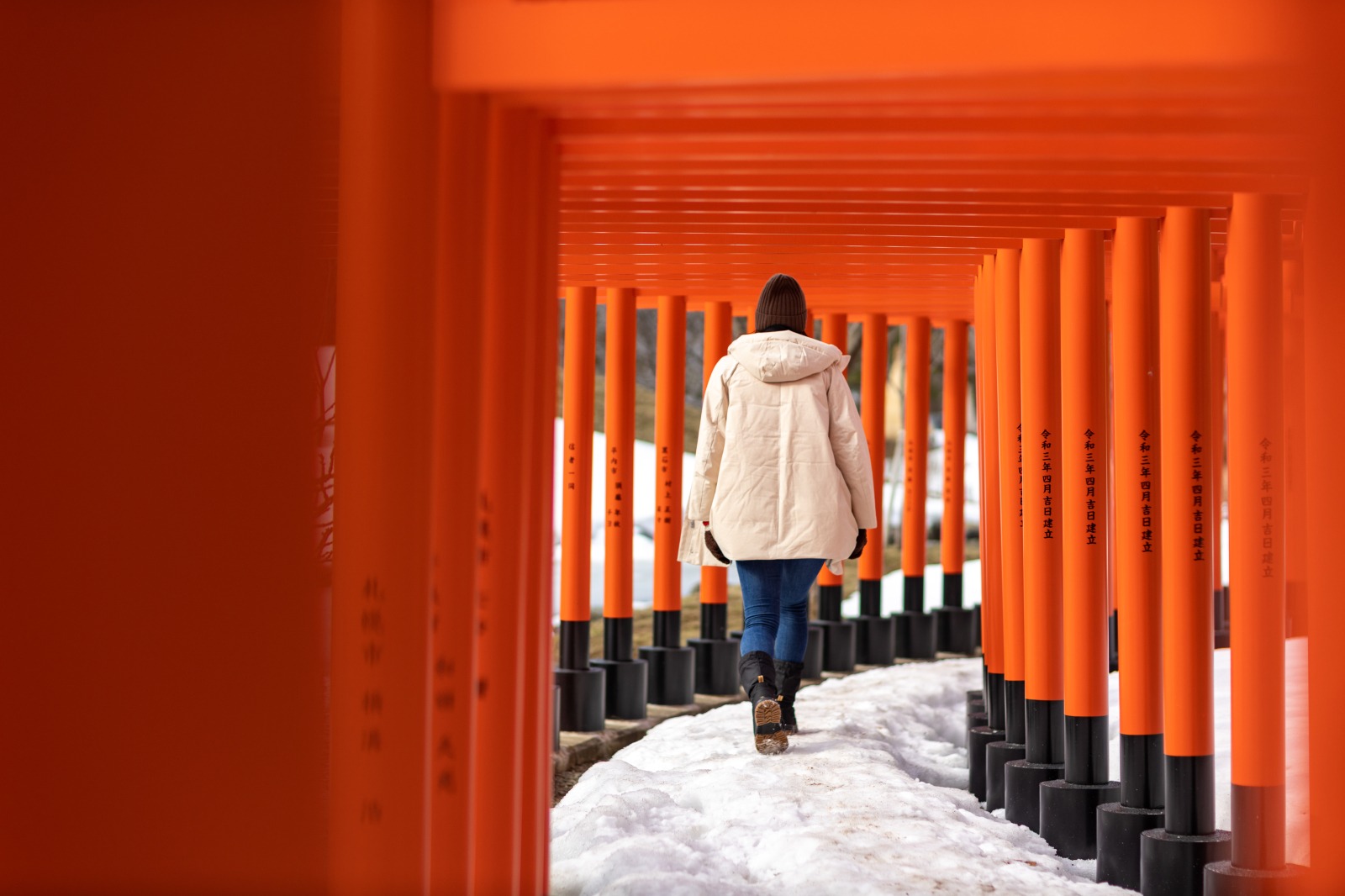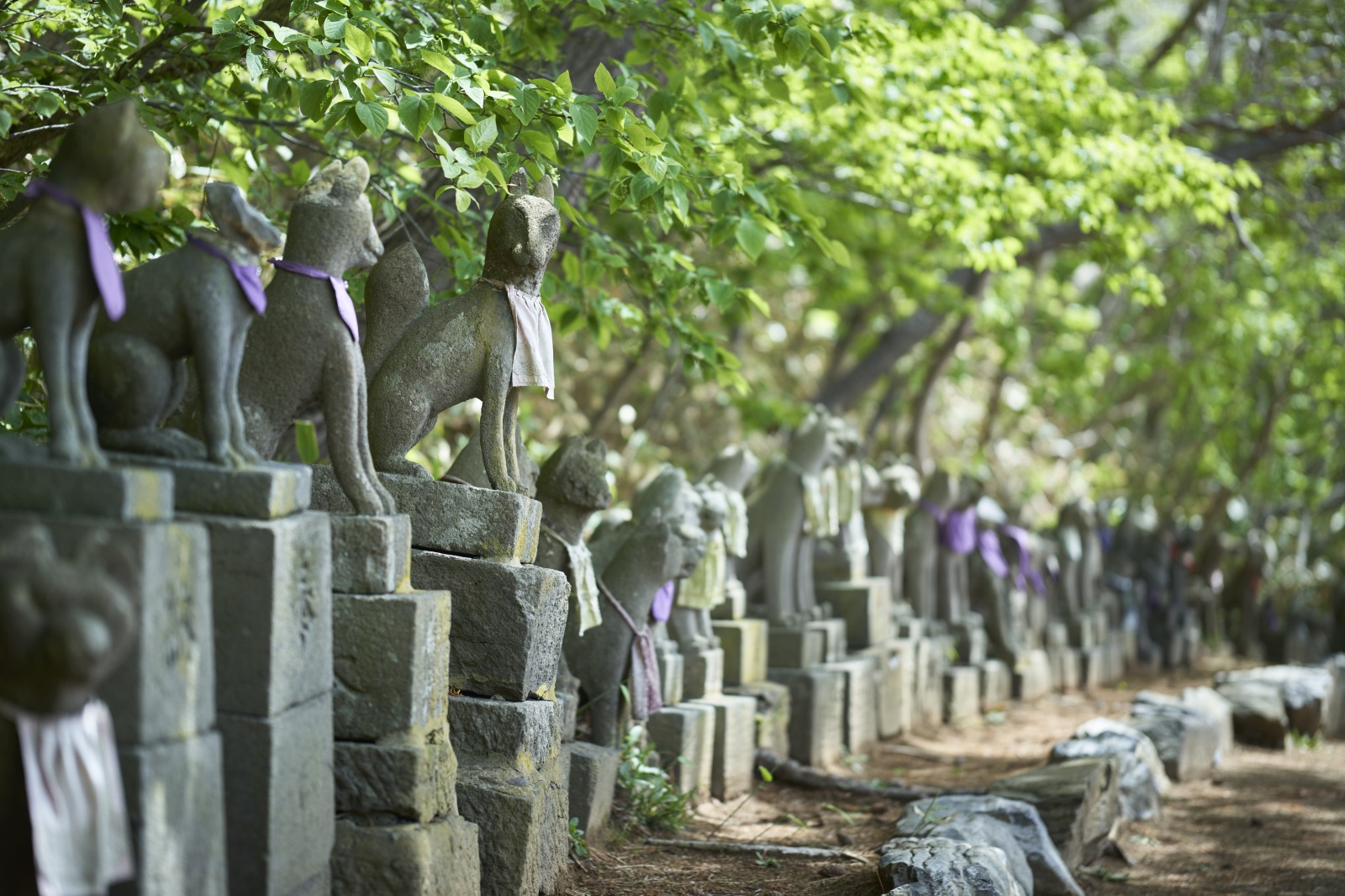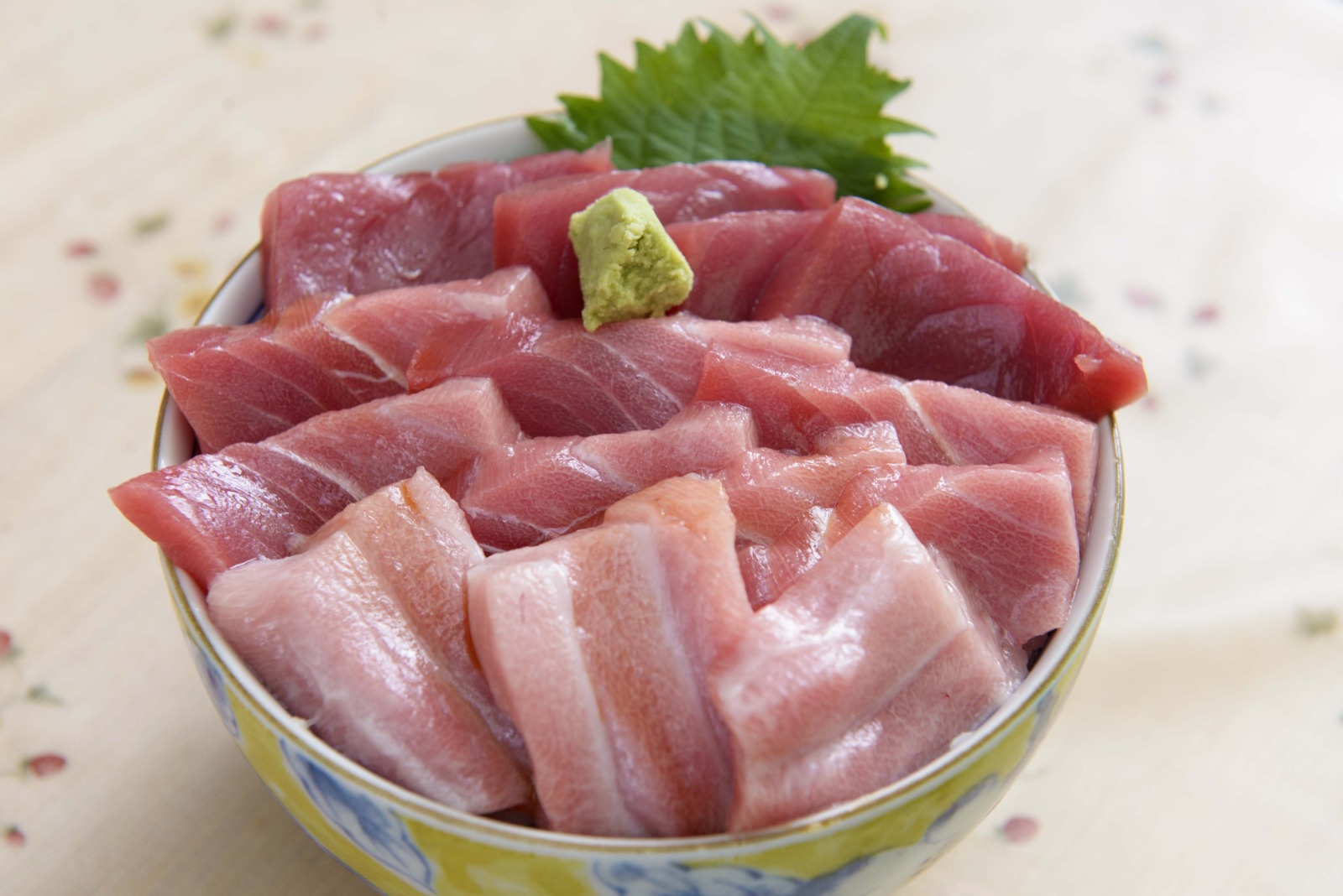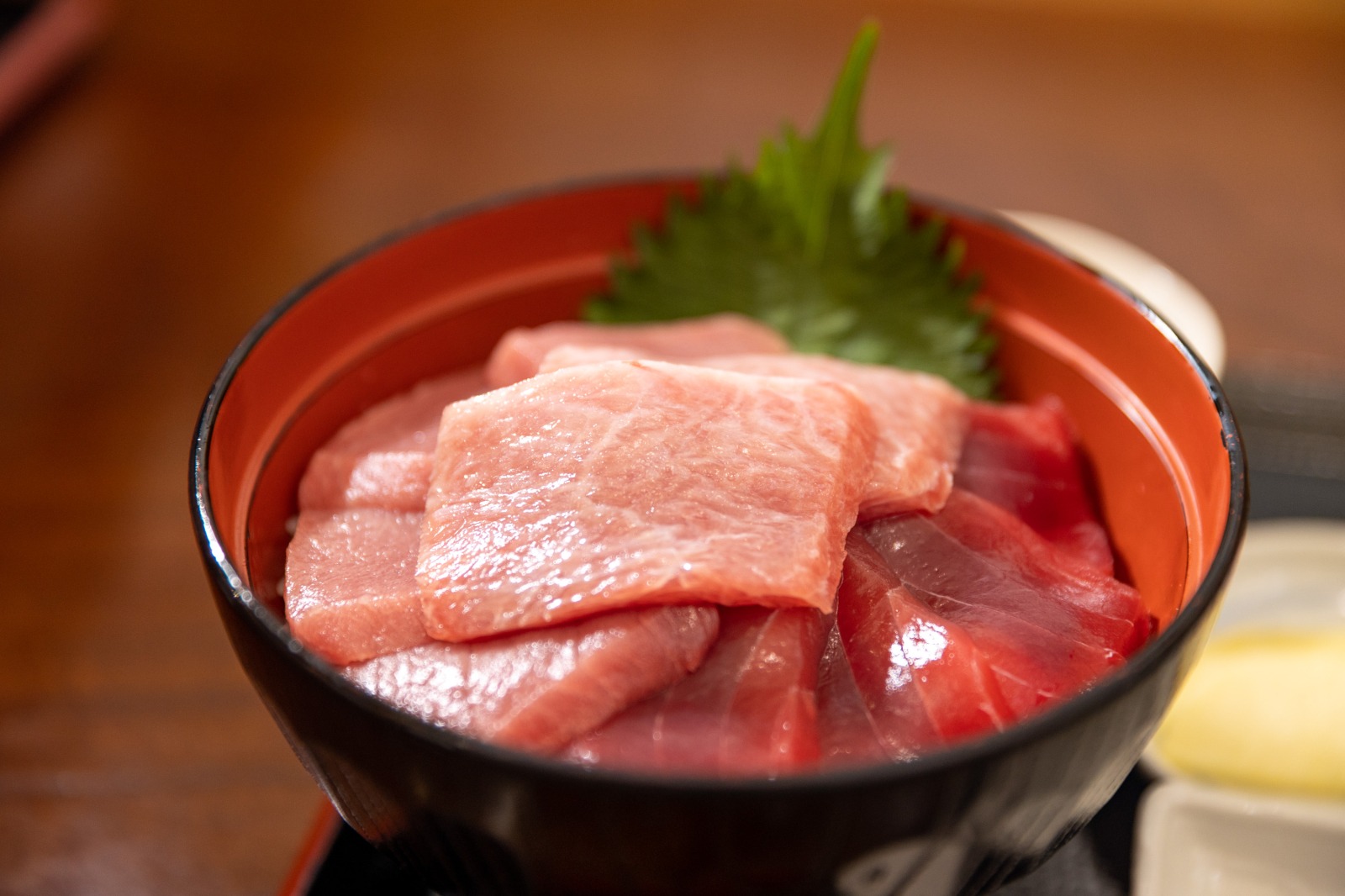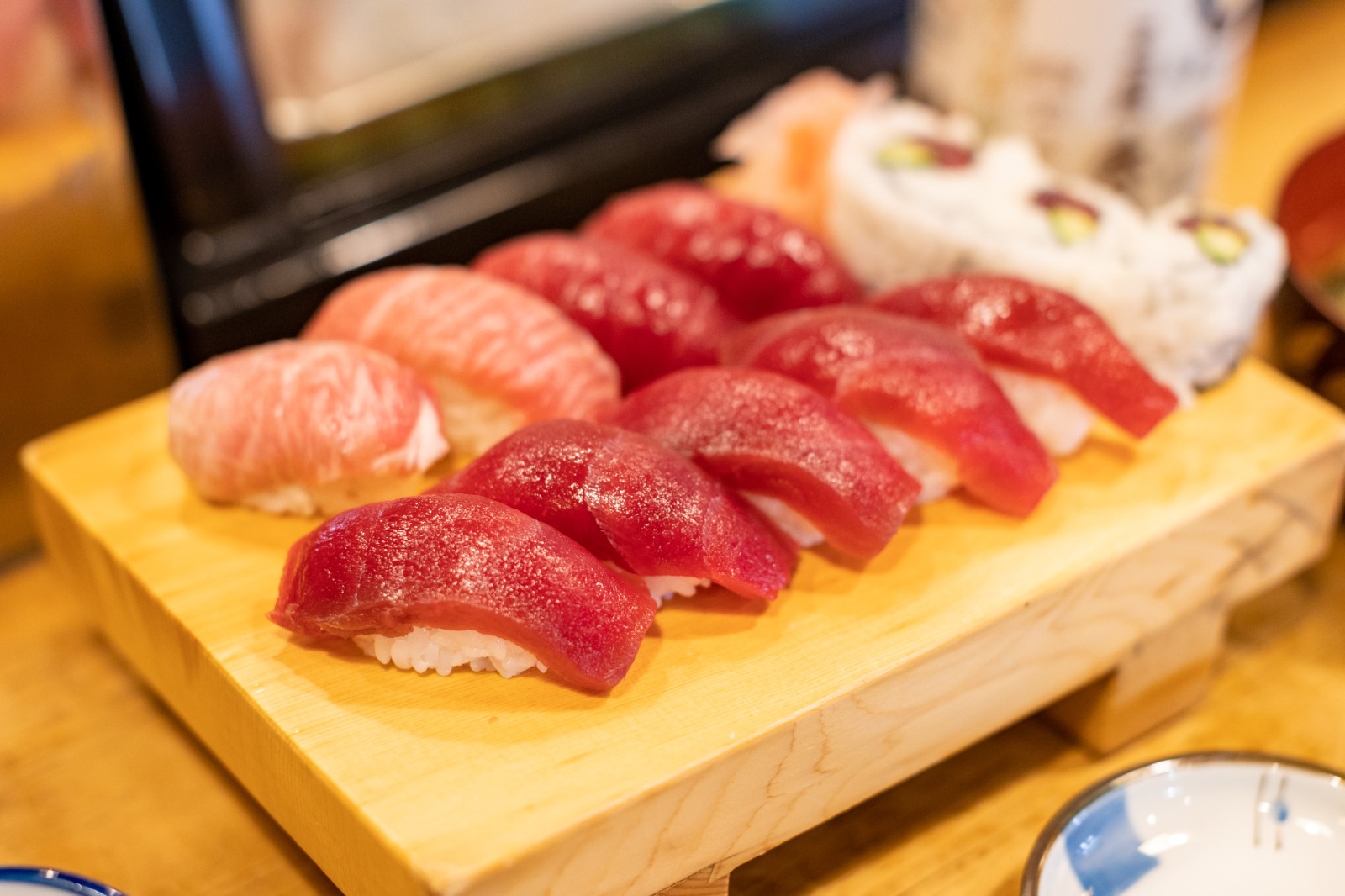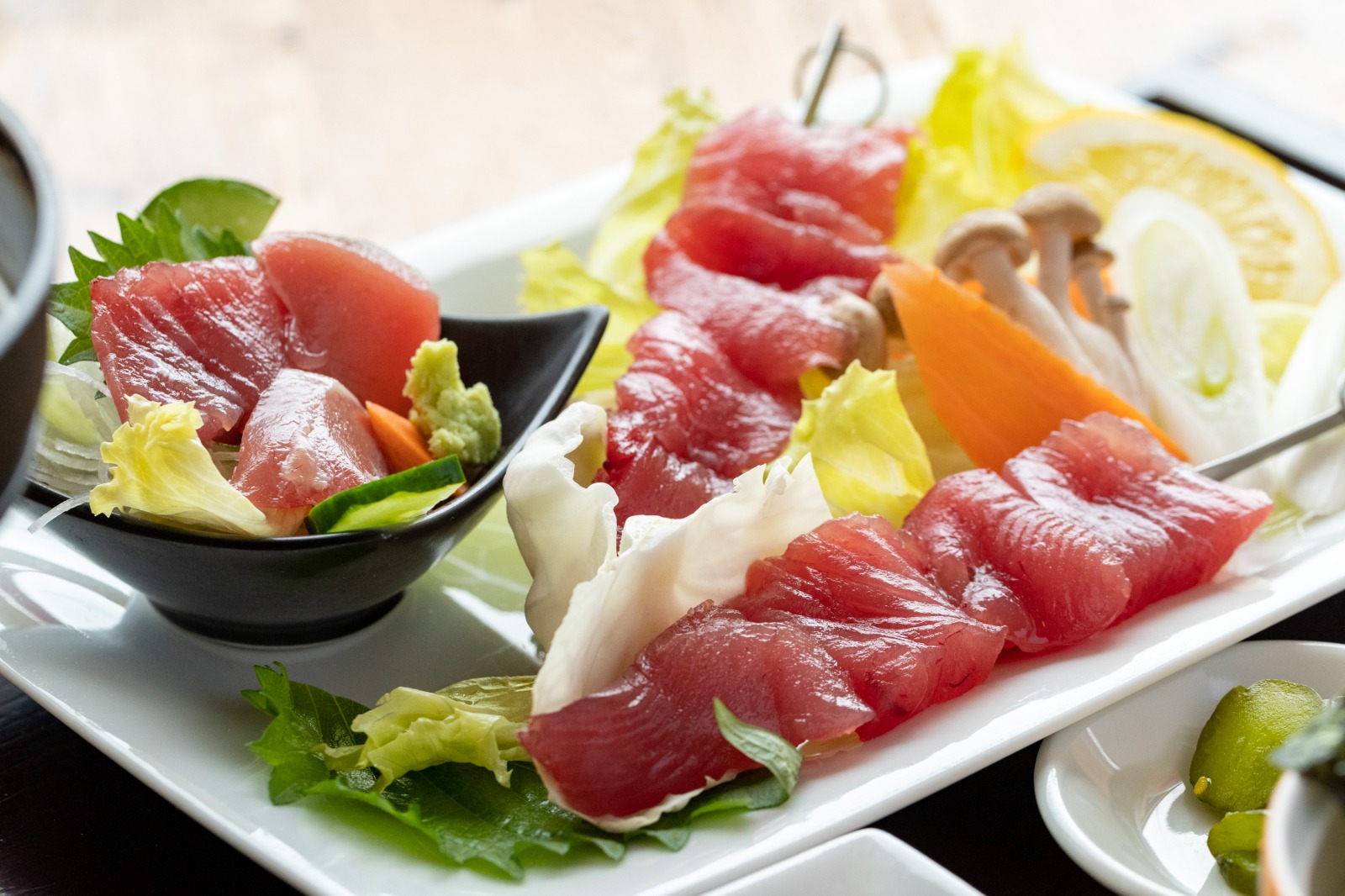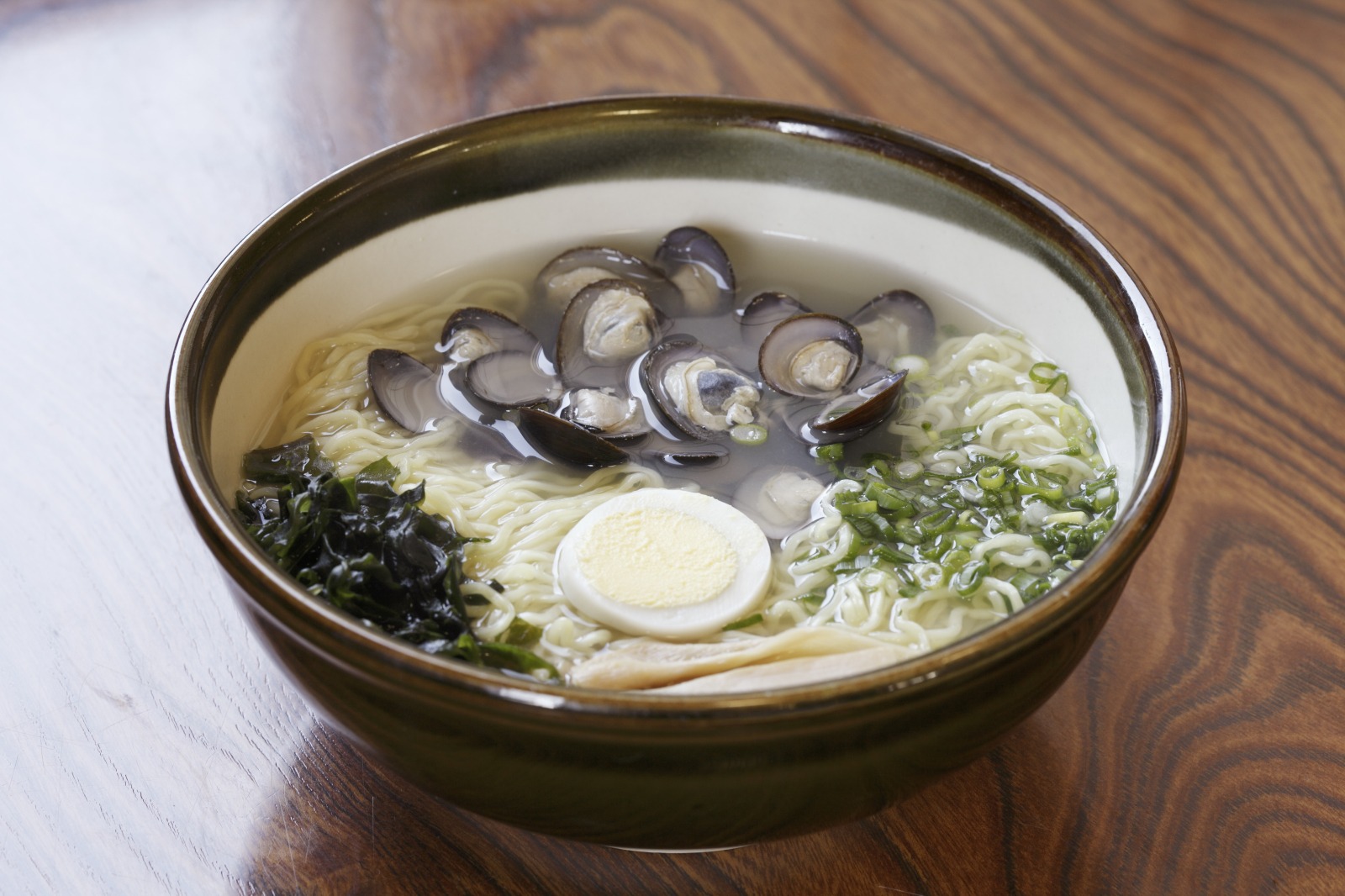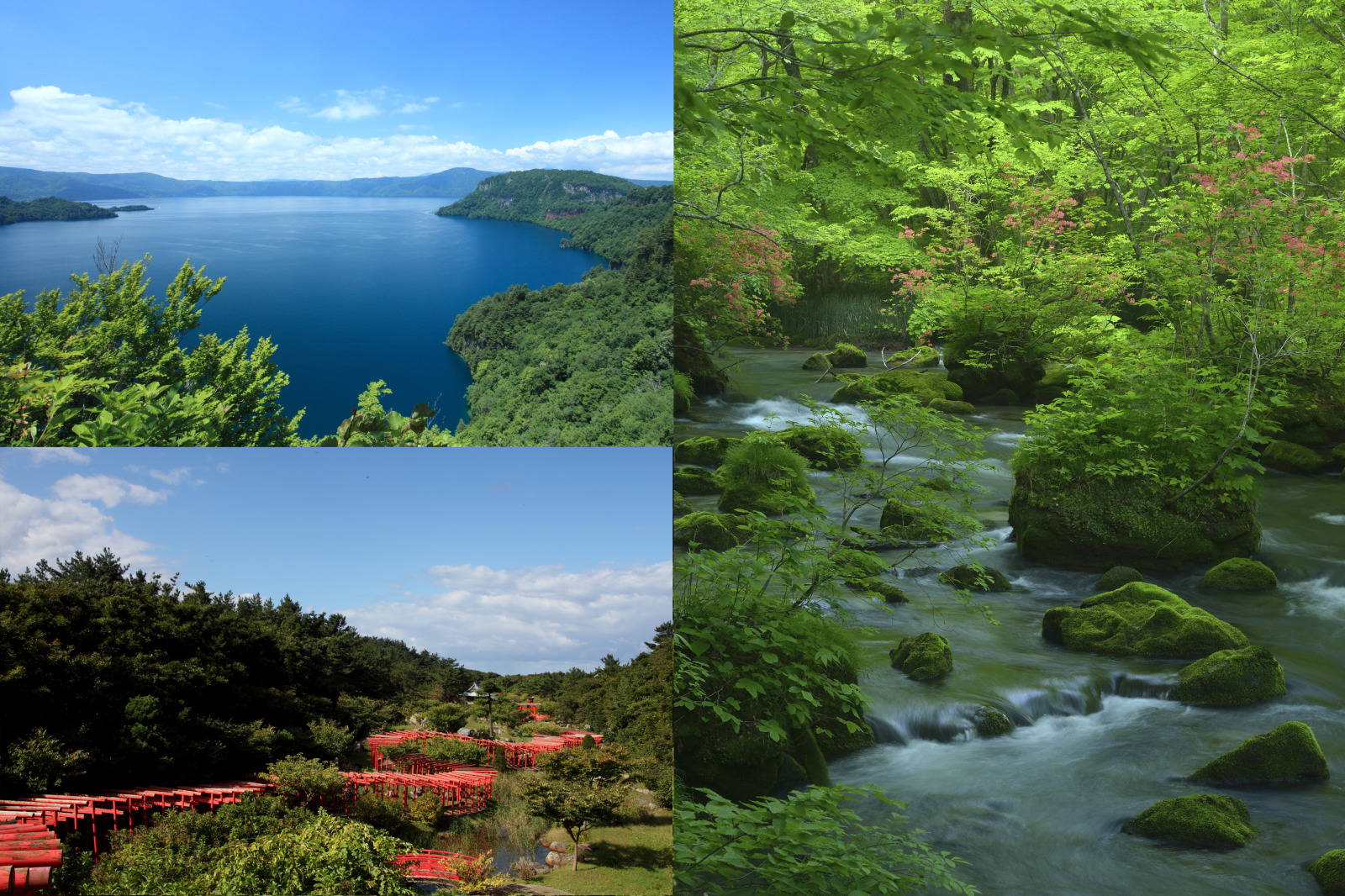A Tale of Two Peninsulas: Unforgettable Vistas Await You in Aomori’s Most Far-Flung Regions

Situated at the northern tip of Honshu, the main island of Japan, Aomori itself terminates in two peninsulas at its northernmost extremity. Separated by Mutsu Bay, the Tsugaru and Shimokita peninsulas are home to some of the most remote regions in the entire prefecture, but they are also indescribably rich in culture, history, and the bounties of nature. If you make the journey to these far-flung areas, you’ll be rewarded with experiences that remain etched in your memory forever.
Stunning Scenery
On the western coast of the Shimokita Peninsula at the entrance to Mutsu Bay, the crashing surf has eroded green tuff spewed by an undersea volcano into towering rock formations with striking shapes. This coastline is called Hotokegaura, meaning “Buddha’s inlet,” and the rock formations seem to invoke a sacred presence, looming like statues of the Buddha and his disciples. A breathtaking masterpiece carved by the power of nature, the white rock surfaces gleaming in the sunlight form a stunning contrast with the deep blue of the ocean and sky. Since the rock formations are difficult to access by land, they are best viewed from the deck of a sightseeing boat, with many routes departing from the “Arusas” terminal in the nearby Sai Village.
Traveling further along the coast of the Shimokita Peninsula, Cape Shiriyazaki offers views of a historic lighthouse as well as the adorable sight of Kandachime horses grazing. These horses look almost like ponies with their short legs and stout frames that help them withstand the peninsula’s harsh winters. Although no longer used as beasts of burden for farming, they are now protected as a prefectural Natural Treasure.
Inland, the lush forests of the Shimokita Peninsula contain areas of pristine natural beauty such as Yagen Stream. This approximately four-kilometer section of the Ohata River has a walking path that runs from Yagen Bridge to the Oku-Yagen Onsen hot-spring spa. The river’s swirling white rapids are especially beautiful in the fall, when they are surrounded by colorful beech and maple leaves. Of course, a dip in the spa or in its free outdoor foot bath is also not to be missed.
Meanwhile, Cape Tappi at the northern tip of the Tsugaru Peninsula offers breathtaking views of both the Tsugaru Strait and the Sea of Japan. It’s also where you can find Japan’s only “staircase highway,” a several-hundred-meter section of National Route 339 that turns into a series of steps. It goes without saying that this part of the road is only open to pedestrians, but the climb to the lighthouse at the top is worth it for a panoramic ocean view.
The Tsugaru Railway, the northernmost private railway in Japan, takes you through many kilometers of the Tsugaru Peninsula’s scenic countryside on a single-track rail. Special seasonally themed trains—“Stove Trains” equipped with potbellied stoves, “Furin Trains” decorated with wind chimes and haiku poems, and “Suzumushi Trains” featuring the sound of live bell crickets—run at different times of the year so that passengers can enjoy the picturesque vistas in all four seasons, from snowy landscapes in winter to green fields in summer.
The Tsugaru Peninsula is also a gateway for exploring the sprawling Shirakami Sanchi UNESCO World Heritage Site. This region of mountains and old-growth beech forests helped inspire the setting of the Studio Ghibli animated film Princess Mononoke. The spectacular sights include the Anmon Falls, a secluded three-tiered waterfall, and the Juniko (“twelve lakes”) area, a collection of numerous small lakes and ponds including the mysteriously blue Aoike Pond. Although the cause of the pond’s vivid color remains unknown, it is thought to be entirely natural in origin, and the surrounding lush greenery forms a vibrant contrast with its translucent blue.
Sacred Encounters
Osorezan on the Shimokita Peninsula is one of the most spiritual spots in Japan, considered to be a place linking this world with the next due to its resemblance to descriptions of the Buddhist afterlife. A walking course around the temple’s precincts takes you through both the “hell” of desolate volcanic rocks and sulfurous fumes and the “heaven” of a sandy white beach on the shore of a crystalline blue lake. Statues of the guardian deity Jizo, piles of pebbles, and brightly colored pinwheels placed throughout the grounds symbolize the prayers of worshippers, reminding you of all those who have come here to remember their lost ones.
Visitors to Takayama Inari Shrine on the Tsugaru Peninsula are greeted by the otherworldly sight of rows upon rows of bright red torii gates. The stunning scenery is similar to Fushimi Inari Shrine in Kyoto but without the infamous crowds. Numbering in the hundreds, the gates wind like an undulating serpent through a carefully cultivated Japanese garden, with countless fox statues adding to the mystical atmosphere. The juxtaposition of the reddish orange torii gates with a lush green forest and garden and a glimmering pond makes the shrine a paradise for photographers.
Delicacies of the Land and Sea
At the tip of the Shimokita Peninsula lies a town whose name is synonymous with premium-quality tuna: Oma. So precious that it is nicknamed the “black diamond,” Oma tuna is carefully caught by hand using fishing poles to minimize damage to the fish. The massive tunas have to put on plenty of fat to survive the rough and chilly waters of the Tsugaru Strait, resulting in perfect marbling that makes this fish worthy of being called the “Wagyu Beef of Tuna.” Try a tuna rice bowl to savor the melt-in-your-mouth texture of the fatty tuna.
Speaking of beef, Oma is also known for its high-quality beef from cattle grazed on steep mountain slopes, which is only available locally. If you try sukiyaki (Japanese-style hotpot) with Oma beef, you’ll understand why it’s known as the “Tuna of the Land.”
But although Oma’s branded tuna may be the most famous nationwide, the Shimokita Peninsula isn’t the only place where you can taste delicious tuna. The fishing ports of Fukaura and Minmaya on the Tsugaru Peninsula also have their own brands of tuna. Fukaura is known for its local specialties of seared tuna steak and tuna hamburger, which are perfect if you aren’t a huge fan of raw fish. Meanwhile, Minmaya tuna sushi is a specialty of Sotogahama Town at the tip of the Tsugaru Peninsula.
In addition to tuna, another delicacy you can enjoy on the Tsugaru Peninsula is Jusanko Shijimi ramen noodles made with Japanese basket clams (shijimi) from Lake Jusanko. The clams are used both as a topping and in the rich broth, which takes on a cloudy appearance from their intense umami flavor. Basket clams are high in various amino acids as well as minerals, making this the perfect dish to replenish your energy after an action-packed day of sightseeing.
As you can see, Aomori’s remote Tsugaru and Shimokita peninsulas contain some of the prefecture’s most captivating regions. Their gorgeous natural scenery, spiritual sites, and gastronomical delights make them well worth a trip off the beaten path. Come on a trip to discover some of Aomori’s (and Japan’s) best-kept secrets!

